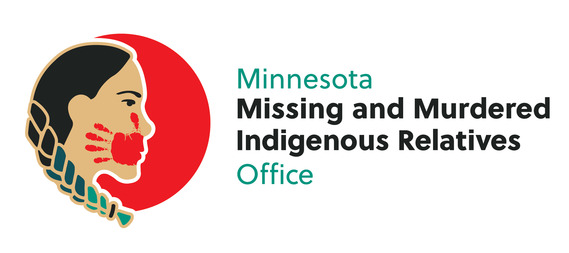 CONTACT:
Amber Schindeldecker
651-201-7576
Oct. 11, 2023
New Report Offers Best Practices for Cases of Missing and Murdered Indigenous Relatives
Study provides guidance for multi-system response of new and unsolved cases
ST. PAUL – Minnesota’s Missing and Murdered Indigenous Relatives (MMIR) office is releasing a yearlong report that highlights major themes, which define and perpetuate the injustices of Indigenous people, and identify the system gaps that are prevalent in reporting, responding to, and offering victims’ services for MMIR cases.
The MMIR office partnered with Wilder Research in 2022 to conduct this comprehensive study of the federal, state and Tribal level policy landscape. The work involved examining emerging best practices in cases of missing and murdered Indigenous people, identifying current issues in Minnesota and offering recommendations for addressing MMIR injustice.
“Research shows that Indigenous relatives don’t always receive an effective or just response from the system when they have gone missing or died under suspicious circumstances,” said MMIR office Director Juliet Rudie. “Every person deserves the same swift and effective response regardless of their race or other characteristics. That’s why this report is so important.”
To conduct the study, Wilder Research reviewed literature and completed in-depth interviews and listening sessions with experts from around Minnesota. This included people with lived experience and family members of Indigenous people who are missing, or who died by murder or other suspicious circumstances. The themes are:
 |
|
- Reporting and initial investigations of missing person cases
- Communication and alert systems
- Review and investigation of unresolved (“cold”) cases
- Death investigation
- Jurisdiction issues and government-to-government collaboration
- Data issues
- Victim and family services
- Prevention
- Media reporting
(Click the image or this link for an expanded look at the themes.)
|
Although they make up less than 1% of the population, Indigenous women, girls and Two-Spirit people account for 8% of all murder victims in Minnesota. Every month, between 27 and 54 American Indian women and girls were listed as missing in Minnesota from 2012 to 2020.
“Over time, Indigenous communities have come to expect unfair treatment, and therefore, they often mistrust law enforcement and experience strained or poor communication during the investigation of their loved one’s case,” said Wilder Research Researcher Nicole MartinRogers. “This report provides guidance for the MMIR office, law enforcement and related systems about key steps we can take in Minnesota right now to address this injustice.”
It is important to note that the report focuses primarily on how these related systems respond once a person has gone missing or died under suspicious circumstances. It does not address the upstream causes of why so many Indigenous relatives are at risk of going missing or being murdered, including:
- Poverty and homelessness.
- Substance use disorders.
- The child welfare system.
- The criminal justice system.
- Domestic violence.
- Human trafficking.
The report also recommends key takeaways for MMIR office partners, such as the Minnesota Bureau of Criminal Apprehensive, the Federal Bureau of Investigation, Safe Harbor Minnesota and local and Tribal law enforcement. Researchers stress the individuals within those agencies be properly trained, use best practices and follow state and federal laws. In addition, the report recommends that law enforcement training programs, such as the Peace Officer Standards and Training (POST) Board, incorporate MMIR topics under existing learning objectives.
The report recommends key strategies and solutions for the MMIR office to maximize its impact over the next three years, such as:
-
Improve the training of law enforcement and other officials to increase knowledge about, and use of, best practices in investigating missing persons and suspicious deaths.
-
Enhance partnerships among all government and non-government organizations involved in preventing victimization, investigating cases and supporting families and communities affected by trauma. This is especially important for law enforcement jurisdictions that have some role in missing persons and suspicious death investigations in Indian Country, including the 11 reservations in Minnesota.
-
Ensure immediate action by law enforcement, community and family. This means reporting of missing persons, along with appropriate and immediate follow-up by law enforcement. This also includes strengthening adherence to existing missing persons' laws (e.g., Brandon’s Law) and working with community-based organizations.
“The recommendations in this report will help the MMIR office prioritize where to focus our efforts as we continue to facilitate and implement the recommendations from the 2020 Missing and Murdered Indigenous Women Task Force report,” said Rudie. “We consider it a privilege to partner with state agencies, law enforcement, victim service providers and the media in the years to come to incorporate these recommendations with the end goal of responding to MMIR cases swiftly and effectively.”
Read the Wilder Research report.
###
 About the Minnesota Missing and Murdered Indigenous Relatives Office:
In 2019, the Minnesota Missing and Murdered Indigenous Women (MMIW) Task Force and Wilder Research provided a report to the Minnesota Legislature. The report included mandates aimed at reducing and ending violence against Indigenous women, girls and Two-Spirit people. As a result, the legislature created the MMIR office to provide support and resources for affected Indigenous families and communities.
Gov. Tim Walz signed into law the legislation to establish the first-in-the-nation MMIR office in 2021. Staff are housed in the Department of Public Safety Office of Justice Programs (OJP) and work to implement the recommendations of the MMIW Task Force.
About the Minnesota Department of Public Safety:
The Minnesota Department of Public Safety is an enforcement, licensing and services agency that develops and operates programs in the areas of law enforcement, traffic safety, alcohol and gambling, fire safety, driver licensing, vehicle registration, emergency management and public safety information.
About Wilder Research:
Wilder Research is a nationally respected independent research group at the Amherst H. Wilder Foundation. Through research and evaluation services, Wilder helps mission-driven organizations throughout Minnesota and the country gather and interpret facts and trends, uncover and understand issues affecting their communities and how best to address them, and inform action that improves lives and communities.
|